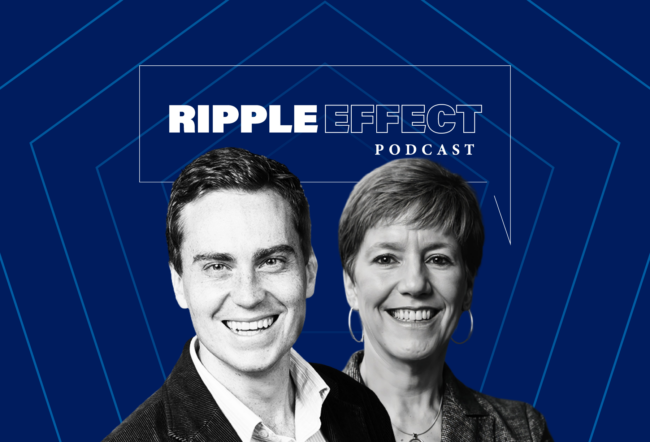When Enron collapsed a year ago, thousands of employees’ retirement savings were wiped out, sparking quick calls for reform of 401(k) plans. Some changes were put in place earlier this year, others are still being debated in Congress.
But now that the smoke of corporate scandals has begun to clear, do problems with 401(k)s still appear as bad as they did last winter? Should the system be left alone, merely tweaked, or overhauled ‑ perhaps converted to a kind of Super-IRA that would solve Enron-type problems by removing the employer from the process?
“We look at what’s happened in the last couple of years, and in general we don’t see that there’s a need for a lot of change in the governmental regulatory structure,” says David L. Wray, president of the Profit Sharing/401(k) Council of America, which represents about 1,200 companies that offer 401(k)s and other defined-contribution plans.
“The Enron situation, which is the one that gets the most ink, is really a corporate governance issue, and all the attacks on 401(k)s under the guise of Enron were really inaccurate & I would argue that the 401(k) system is one of the cleanest, best-managed financial systems ever invented, and the fact that we have exceptions does not make me back off that one bit.”
One of the post-Enron reforms is a federal rule prohibiting corporate executives from trading a company’s stock during blackout periods when employees cannot trade ‑ typically when a plan is changing providers. While he supports the prohibition, Wray notes that Enron insiders who unloaded vast amounts of Enron stock didn’t do it during the 13-day blackout period in the fall of 2001. Most did it earlier. The problem with the blackout was it came as the stock was plummeting.
Though experts have a wide range of views on the need for change, almost all agree the health of 401(k)s is vital to millions of Americans. Over the past 20 years, 401(k)s and similar defined-contribution plans have replaced traditional pensions ‑ defined benefit plans ‑ as the primary source of retirement funds.
According to a study by The Vanguard Group mutual fund company of Malvern, Pa., at the end of 2001 there were 23 million participants in defined-benefit plans and 57 million in defined-contribution plans. With about $1.6 trillion in holdings, 401(k)s contained about 80% of the defined-contribution assets. There were 392,800 401(k) plans with 70.6 million eligible employees, of which 45.9 million were participating.
In 2001, about 50% of American workers were not offered any kind of retirement plan at work. Of those who did receive coverage, nearly 30% were offered only defined-contribution plans, 15% had defined-contribution and defined-benefit plans and about 4% received only defined-benefit plans. The figures show a nearly complete reversal of the situation 20 years ago, when more than 30% of covered workers had defined benefit plans and only a smattering had defined-contribution plans.
At Enron, employees had the lion’s share of their retirement assets in Enron stock ‑ causing disaster when Enron shares became worthless after the company declared bankruptcy. That situation was not typical, however. Vanguard says that among all its 401(k) participants, only 14% of assets are tied up in employer stock. (Approximately 47% of Vanguard plans do not offer employer stock. Among those that do, 25% of assets are in employer stock.)
The majority of financial experts agree that for most workers, 25% is too high. While employees at highly successful companies such as Microsoft have become rich in employer stock, this is not likely in most cases. If a company runs into trouble, the employee with a lot of employer stock could lose both a job and the retirement savings. Consequently most people are better off with greater diversification.
“There has certainly been a lot more attention paid to the benefits of diversification” since the Enron debacle, says Olivia S. Mitchell, professor of insurance and risk management at Wharton and director of the school’s Pension Research Council. “If nothing else, I would hope that participants would move away from single-company stock.”
She says, however, that reports from industry consultants indicate employees have not shifted significant assets out of company stock. A Vanguard survey showed that employees tend to believe, incorrectly, that their employer’s stock is less risky than the market as a whole. “So perhaps there is less of a lesson learned than one would anticipate,” Mitchell notes.
Currently, many companies that make matching contributions with their own stock require that participants hold on to it for some period of time. Among Vanguard plans, 68% of companies that made matching contributions in employer stock had some sort of restriction on selling it. Most common were requirements that participants hold it until they reached a certain age or left the company. Companies that offered their stock as an optional way to receive a match rarely had such restrictions.
Earlier this year, some Democrats had proposed regulatory caps limiting a participant’s investment in employer stock to 10-20% of a portfolio. Those efforts appear to have stalled, partly because companies and employees who have benefited from employer stock lobby much harder than those who have not, Mitchell says.
Mitchell believes, however, that employers are now less likely to encourage company stock investments, given the attention brought to the issue by the Enron case. Managers may worry they can be sued for touting stock that performs poorly. And, she adds, insurers, which provide fiduciary coverage for corporate managers, may impose employer-stock caps to reduce risk. “I wouldn’t be surprised if the overall commitment to company stock were tapered down from a plan-design point of view,” she says.
President Bush and Republicans in Congress want to give employees the right to sell employer stock after holding it for three years. But that has been stalled in the Senate because Democrats oppose another provision that would reduce legal liabilities for employers and plan providers who give employees investment advice.
“I think people should be able to dump their company stock,” says Wharton finance professor Andrew Metrick, arguing there’s no real benefit to requiring ownership. While some employers believe employee ownership boosts loyalty and productivity, there is no evidence that companies which encourage this actually do perform better than ones which do not, he notes.
Many employers, he adds, use their stock for matches because there are tax benefits to doing so ‑ an incentive that has not received much attention in the post-Enron debate. Dividends paid on stock held in employee plans, for example, are tax deductible. “We really have to remove those incentives,” he suggests.
Yet he concedes that giving workers the right to dump employer stock does not mean they will. “Had all those guys at Enron been allowed to sell, they probably would not have.” Wray agrees, arguing that the lion’s share of employee-owned Enron stock was held by employees old enough to have the right to sell; they simply chose not to. The real problem was that Enron was misleading everyone about the company’s earnings and prospects.
Wray believes the issue of whether employers should be permitted to restrict company-stock sales is best left up to employers and their employees. Employers, he argues, have many reasons to be sure their stock is suitable for their 401(k)s. For the most part, 401(k) rules require that the investing options for managers must be the same as those for employees. Also, employers see 401(k)s as an important tool in competing for workers and therefore want them to succeed, Wray says. Consequently, companies tend to put stock into their plans only if they believe it has good long-term prospects. “It isn’t universally true that concentrations in company stock are bad,” he said. “It’s generally true, but not universally true.”
Whatever the shortcomings of 401(k)s, Mitchell does not expect any resurgence of old-fashioned pension plans. “Nobody is starting defined-benefit plans these days,” she says.
Part of the reason is that employees like 401(k)s. “They offer flexibility, portability and choice,” she notes. “People feel a sense of pride in ownership.” During the 1980s and 1990s, “they would get their monthly statements and feel rich.” Employers prefer defined-contribution plans because, in contrast to pensions, the investment risk is the employee’s, not the company’s, she points out.
A good deal of debate has been heard during the past year over how to get employees to make better investment decisions. “It’s not just a 401(k) issue, it’s a general issue concerning how people invest their money,” says Wharton finance professor Marshall Blume. “Work that I have done shows that a lot of people hold only two or three stocks, even in big portfolios.”
It’s difficult to force-feed employees investment advice, he states, though he adds that “certainly, corporations should be able to give some education about investments without legal liability.”
Democrats complain the Republican employee-education proposals go too far in reducing liabilities for employers and plan providers who may not give objective advice because of conflicts of interest. A provider hired by the employer is not likely to discourage employees from owning the employer’s stock, or to criticize other investment options the employer and provider have agreed to offer.
Wray says his members like the philosophy behind the Republican education proposal but feel it would not work because the safe-harbor protections for employers are too weak. They don’t want the expense and trouble of dealing with employee lawsuits even if new legal safeguards make it likely employers will win.
A possible solution, he suggests, would be to establish a checklist of employee-education procedures that, if followed, would guarantee employers protection for legal liability even if investment advice turned out badly.
Some experts have recently kicked around the idea of changing 401(k)s into a kind of Super-IRA which would remove most of the employer’s role, eliminating the kinds of conflicts of interest that led to the Enron situation. A Super-IRA would work like a traditional IRA, while allowing large tax-deductible contributions comparable to 401(k) limits. Super-IRAs could be open to everyone ‑ including the approximately 50% of workers who today are not offered any type of employer-sponsored retirement plan. Experts generally agree that about 40% of Americans are at risk of not having enough for a comfortable retirement.
With a Super-IRA, participants would make their own investment choices; they would not be limited to the handful of offerings approved by their employer. Employers could still make tax-deductible matching contributions, but probably only in cash.
Mitchell notes, however, that employees have not shown much interest in having unlimited investing options. The Vanguard study indicated that few participants actively manage their accounts. “People tend to pick two or three funds and stick with them.”
She also notes that “there is always a trade-off between cost and choice.” IRA providers dealing with a flood of small accounts might have to raise fees to cover administrative costs, and fees have a corrosive effect on long-term investment returns. “More choice may seem appealing,” she said, “but it does get expensive.”
Wray strongly opposes the Super-IRA idea. The historically low levels of participation in traditional IRAs compared to 401(k)s shows that employers have worked successfully to encourage participation. Even an employer who is not the best at picking investment options for a 401(k) is likely to do better than a low-level worker left on his own with a Super-IRA, Wray says.
“Employers are accountable for a process, and that process is incredibly valuable to employees,” he adds. “The protections that are in the (401(k)) system are valuable, more valuable than a lot of people think.” Most employers would decline to make matching contributions if the retirement plan were no longer associated with their companies, he predicts.
Finally, he says, providers would not welcome the change because it would eliminate the cost efficiencies they enjoy from having 401(k) participants delivered in large batches. If each employee sought out his own provider, fees would go up, cutting into long-term returns. “I am convinced that most people who are in 401(k) plans would not invest without them.”
Metrick argues, however, that the Super-IRA idea is ‑ perfectly reasonable ‑ and probably would not be a loss for employees. Employers match in order to attract, retain and motivate good employees. They would still need to compete if their role in 401(k)s were reduced, so they either would continue to match or they would improve salary or other benefits, he says.
Metrick found in a recent study that employees tend to follow the path of least resistance in managing their 401(k)s. If they are automatically enrolled upon being hired, they tend to remain enrolled. If they are not, they tend not to take the trouble to join.
If he were empowered to design a Super-IRA, he would set a “default” that would automatically enroll employees and direct their contributions into a set of low-fee index funds. Employees would then be allowed to opt out or change investments, but they would have to make some effort to do so.
Metrick argues that if the marketplace were truly serving employees’ interests, most 401(k) plans would offer baskets of low-fee, highly diversified index funds. “There are an awful lot of plans that don’t have index funds in them,” he says, “and that seems just wrong.”



